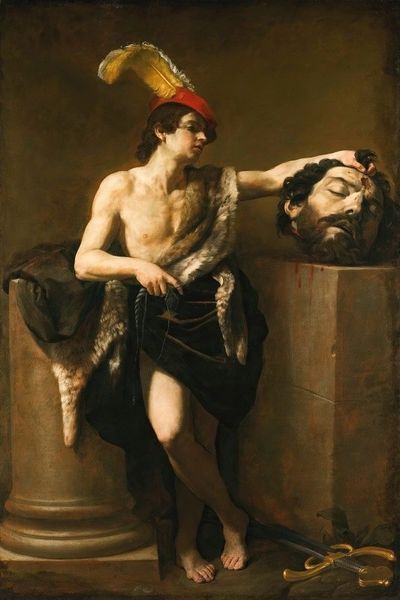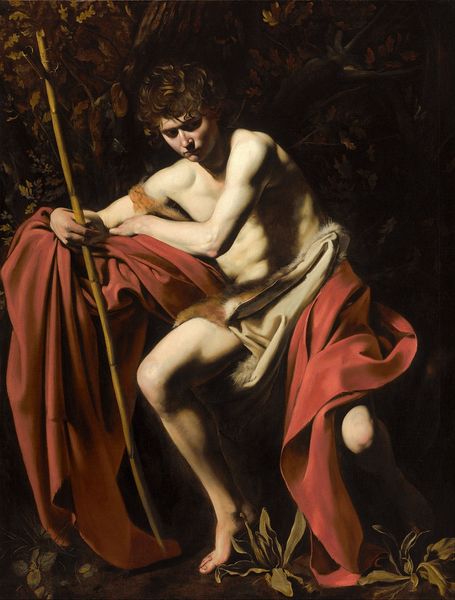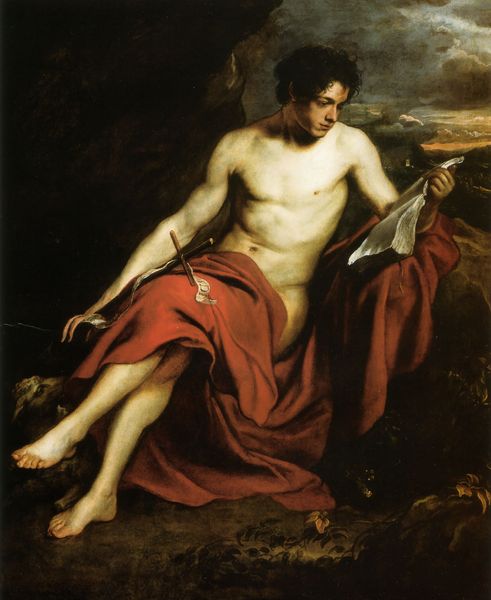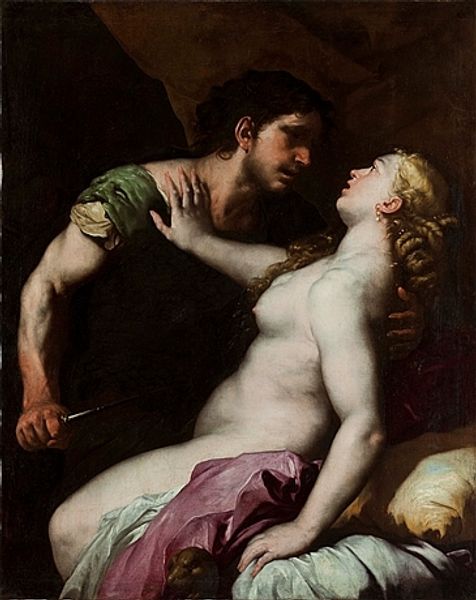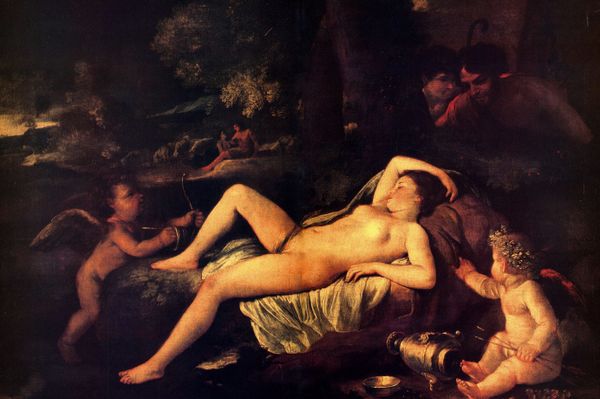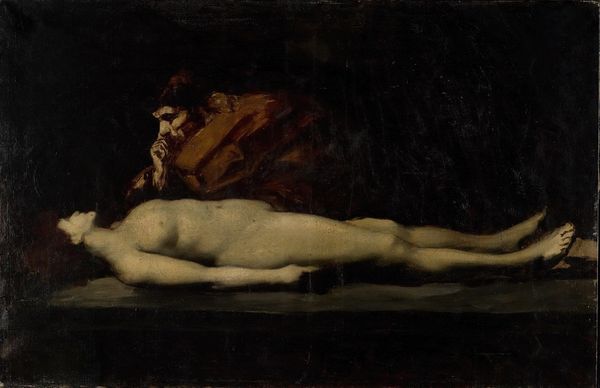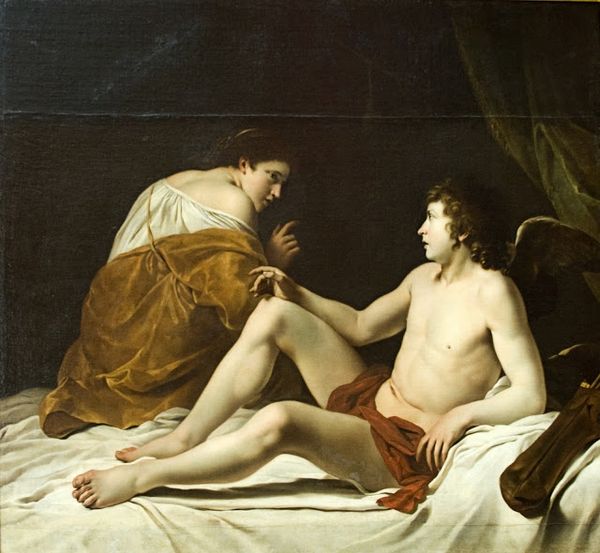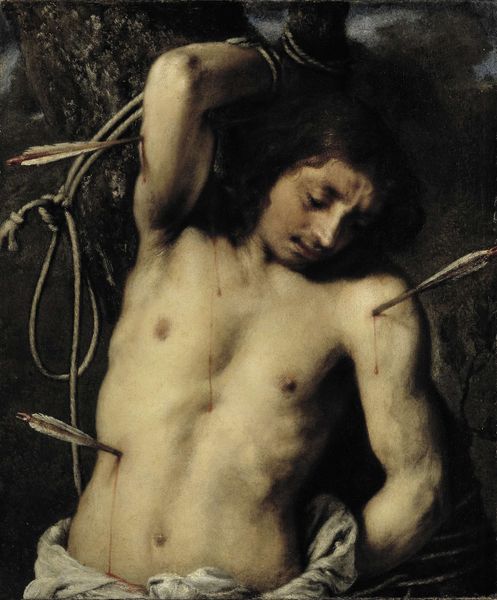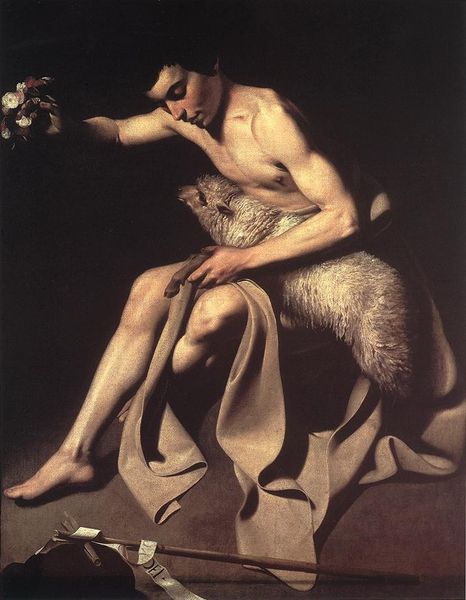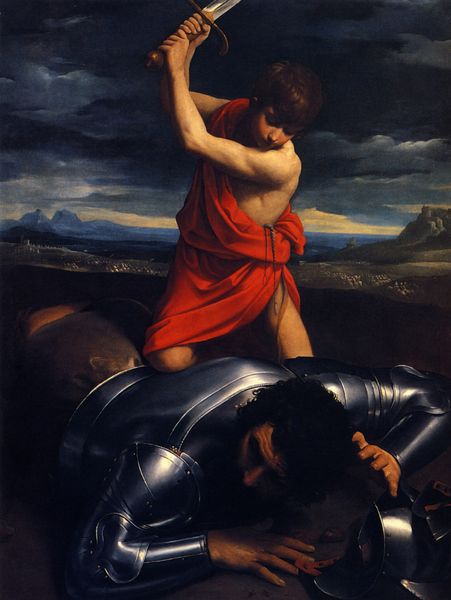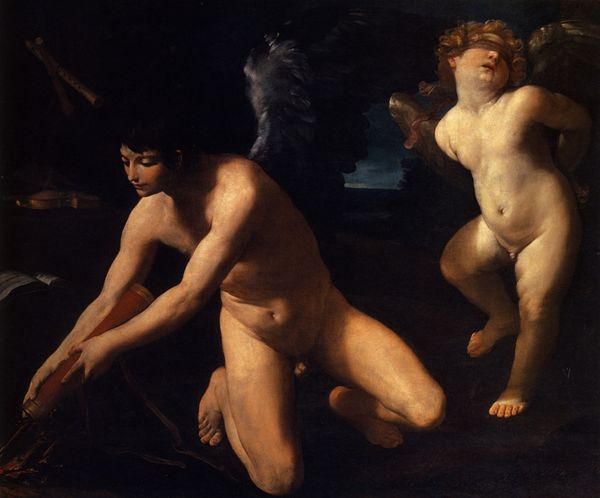
painting, oil-paint
#
portrait
#
allegory
#
baroque
#
painting
#
oil-paint
#
figuration
#
christianity
#
history-painting
#
nude
Dimensions: 220 x 160 cm
Copyright: Public domain
Curator: This is Guido Reni’s “David with the Head of Goliath,” painted around 1606 and now residing in the Louvre. It’s oil on canvas, and quite striking in person. Editor: Striking is one word for it. Immediately, I notice the textures – the soft fur against David's skin, the stark contrast of the stone, even the grim reality of Goliath's severed head resting so casually. It’s visceral. Curator: Yes, Reni was masterly at capturing different textures in paint. But beyond the surfaces, let’s consider its historical context. The David and Goliath story was potent propaganda. Florence, for example, often likened itself to David, bravely standing against larger, tyrannical states represented by Goliath. Editor: That reading makes perfect sense. And thinking materially, the commission of such a grand piece suggests powerful patronage – individuals or institutions seeking to align themselves with this underdog narrative. It also speaks to a certain kind of art market geared around heroic themes, selling moral authority as much as artistry. Curator: Exactly. It reflects the religious and political tensions of the Counter-Reformation. Artists like Reni used familiar biblical stories to reinforce certain values, reminding viewers of the triumph of good over evil, obedience over rebellion. David as an instrument of divine will. Editor: Looking closely, though, at David's slightly downcast expression... is there perhaps some implied violence here? The boy looks almost pained to be a part of the bloody scene, no obvious triumphant grin on display. The fur draped on his shoulders, the ornate fabrics—these are material indicators of wealth and prestige acquired by someone like David, the hero... perhaps after bloodshed comes excess? Curator: Interesting point. Certainly, baroque art is not always simple propaganda. It uses pathos and emotional complexity to engage the viewer. And what about the material fact of the painting itself as a luxury object—a commodity enjoyed in private collections, perhaps by those with a somewhat ambivalent relationship to political authority? Editor: It makes me wonder who crafted that sumptuous velvet wrap and where it was imported from at the time. Was it Venetian? A product of local craftsmanship within Rome itself? I'm suddenly more concerned about those uncredited labourers than with David himself. Curator: Well, there are so many things to consider! Each glimpse unveils more. Editor: Agreed. It is so rich in history, symbolism and the ways that power shows itself via both story and stuffs. A grim scene so gloriously captured.
Comments
No comments
Be the first to comment and join the conversation on the ultimate creative platform.
